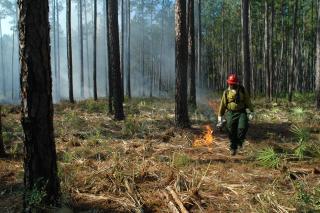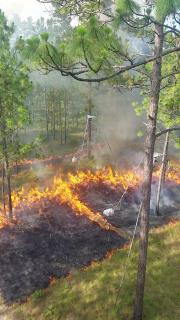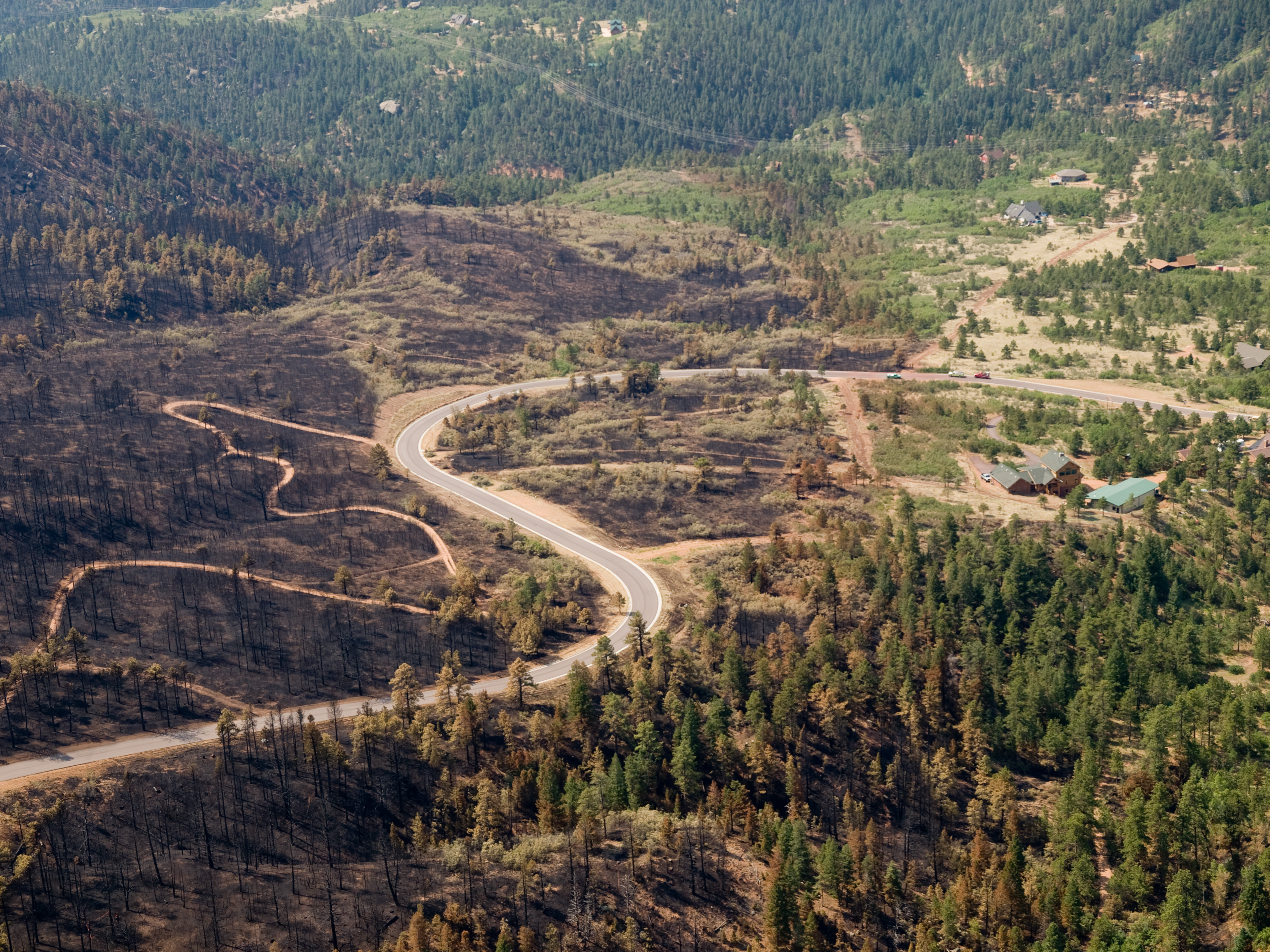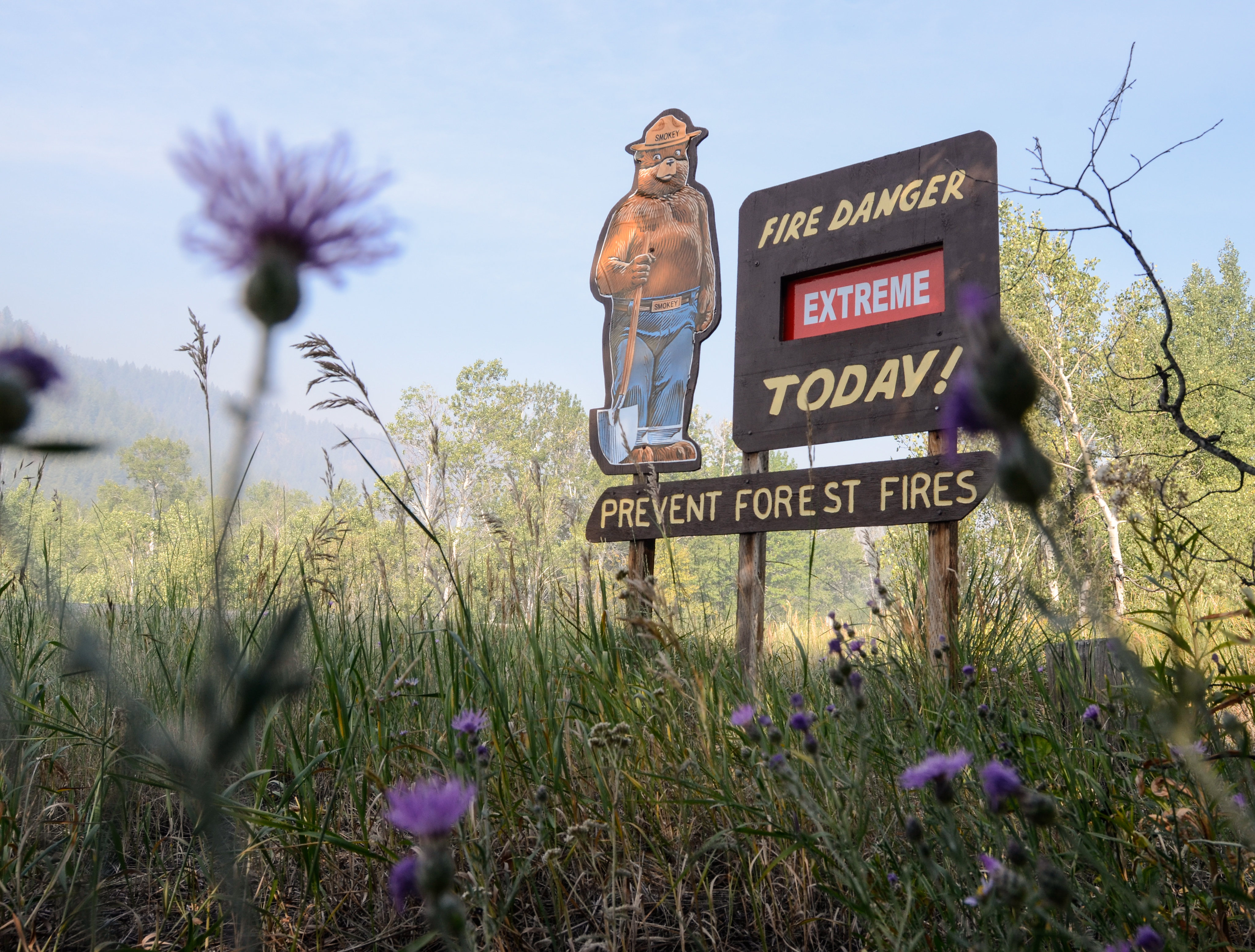Editor’s note: The USDA Forest Service recently announced a 10-year strategy to confront the wildfire crisis and improve forest resilience. Increasing fuels treatments will be paramount to create healthier forests and reduce wildfire risk to communities. The Forest Service’s Southern Research Station routinely researches the science of prescribed fire and why it’s needed now more than ever.
Much of what is known about planned fire comes from a burn manager’s memory.
“It takes years to get that kind of experience,” says Joseph O’Brien, fire research ecologist with the USDA Forest Service. “If things are changing, like invasive species or climate, or if you’re a new manager, you need help.”
O’Brien, writing in Fire Ecology with J. Kevin Hiers of Tall Timbers Research Station and others, identified a need for more science-based prescribed fire predictions and models. Fire researchers and managers can use these tools to test scenarios, teach new prescribed fire managers, and identify possible improvements in fire prescriptions and plans.
Recent attention and funding have focused on containing big wildfires, understandably. But out-of-control fires don’t lend themselves to research.
“Wildfire managers want to stop the fire and keep people safe. In that environment, researchers would be in the way,” adds O’Brien.
Prescribed fires are better suited for research before, during, and after a burn event. Fires are sometimes set to answer research questions:
How are smoke plumes from small, low-intensity prescribed fires different from those from larger, higher-intensity wildfires?
How do fire-induced wind fields drive fire spread?
How do variations in season, intensity, and frequency of prescribed burns affect plant, animal, and soil responses?
More often, fires are prescribed to remove invasive or overgrown underbrush and restore native, fire-adapted flora and fauna. In unmanaged forests where fire has been excluded, “you get a shift in vegetation type, from fire-dependent oak forest to sweetgum-poplar-maple, for example,” says O’Brien. “You lose a whole suite of species that can’t survive in the forest that’s replacing it. You lose economic value of wildlife and timber, and biological diversity.”
Low-intensity fires that clear leaf litter and fallen branches have the added advantage of slowing the spread of any wildfire that lightning might spark.
Fire behavior and effects are often drastically different between wildfires and prescribed fires. Yet prescribed fire research can inform wildfire managers, O’Brien says. Decision-making in both prescribed and wildfires draws on scientific expertise in fire behavior, smoke science, meteorology, fuels management, and more.
For predicting fire behavior, the SRS team developed and is testing QUIC-Fire. The real-time modeling tool uses 3D maps of fuels and forest structure and accounts for how chemistry, material science, fluid mechanics, and heat transfer interact to influence fire behavior — yet it can run on a laptop computer. “It’s definitely a revolution in modeling and a quantum leap in fire management,” says O’Brien.
QUIC-Fire was created, evaluated, and improved by access to prescribed fire operations, “where we could measure conditions before, during, and after the burn in detailed and extensive ways,” adds O’Brien.
After ten years in development, QUIC-Fire is getting good results in testing.
“We have been building demonstration landscapes on Oconee National Forest and Piedmont National Wildlife Refuge,” says O’Brien. “We’re going to get feedback from the managers who know those lands best. Managers’ insights will mold the product to meet timber stand management objectives. “For example, a land manager could say, ‘We want to manage underbrush without scorching the pines.’”
The new WIFIRE Lab at the University of California, San Diego has integrated QUIC-Fire as the model behind its new prescribed fire decision support tool BurnPro3D.
QUIC-Fire’s developers organized themselves this year as a modeling hub for advanced forest and fire technology. They teamed up with partners from Tall Timbers, the Forest Service’s Pacific Northwest Research Station, Los Alamos National Laboratory, and the University of Georgia.
Based at the Athens Prescribed Fire Lab, the hub includes seven scientists who previously created the Prescribed Fire Science Consortium. The Consortium brought together various fire managers and scientists annually at a burn site to observe, network, share experiences, and vet ideas.
“Anybody who manages land that is prone to fire has insights that are valuable,” says O’Brien. “Our collaboration with Southern Region fire management gave us the exposure to fire operations that generated the insights we are pursuing. Fire managers have the knowledge we need, and there are gaps they need to fill. There’s respect for each other on both sides.”
“The goal of the modeling hub is to operationalize QUIC-Fire and the framework of required 3D inputs that also serve to revolutionize fire effects assessment and fuels treatment monitoring,” says O’Brien.
Read the article arguing the need for more mechanistic science for prescribed fire.
Read the article about the Prescribed Fire Science Consortium.







